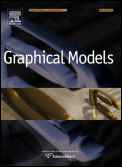
GRAPHICAL MODELS
Scope & Guideline
Exploring the Dynamic Landscape of Graphical Models
Introduction
Aims and Scopes
- Graphical Modeling Techniques:
The journal emphasizes various methodologies for graphical modeling, including both traditional and contemporary approaches, such as mesh processing, point cloud analysis, and surface reconstruction. - Computer Vision and Image Processing:
Research on the intersection of graphical models with computer vision is a core area, including image restoration, object detection, and scene understanding through advanced algorithms. - 3D Reconstruction and Representation:
A significant focus is on techniques for 3D reconstruction from 2D images, including single-view reconstruction and methods for accurate representation of complex geometries. - Machine Learning Applications:
The integration of machine learning techniques, particularly deep learning and generative models, in graphical modeling is a prominent theme, showcasing innovative applications in various domains. - Simulation and Animation:
The journal also covers advancements in simulation and animation techniques, including crowd simulations, character animation, and physical simulations of natural phenomena.
Trending and Emerging
- Deep Learning and AI in Graphical Models:
There is a marked increase in research integrating deep learning techniques into graphical modeling, which allows for improved accuracy in tasks such as object recognition, image generation, and 3D reconstruction. - Interactive and Real-Time Graphics:
Emerging themes focus on real-time applications and interactive graphics, particularly in virtual reality (VR) and augmented reality (AR), where responsive and immersive experiences are increasingly important. - Point Cloud Processing:
The increasing use of point clouds in various applications, such as autonomous driving and 3D scanning, has led to a surge in research focused on efficient processing, denoising, and upsampling techniques. - Generative Models for Graphics:
Research on generative models, including GANs (Generative Adversarial Networks), is on the rise, showcasing innovative applications in character generation, scene understanding, and style transfer. - Simulation of Natural Phenomena:
There is a growing interest in accurately simulating natural phenomena, such as fluid dynamics and organic growth processes, which is crucial for enhancing realism in graphics and animations.
Declining or Waning
- Traditional Geometric Modeling:
There has been a decrease in papers focusing on traditional geometric modeling techniques, such as basic spline and curve representations, as researchers increasingly explore more advanced and computationally efficient methods. - Static Graphics Rendering Techniques:
Research centered on static rendering techniques has become less prevalent, possibly due to the growing interest in dynamic rendering and real-time applications, driven by advancements in hardware and interactive graphics. - Basic Image Processing Algorithms:
Papers focusing solely on fundamental image processing algorithms without integration into broader graphical models or machine learning frameworks are becoming less common, reflecting a shift towards more integrated approaches.
Similar Journals
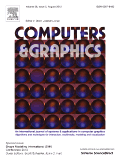
COMPUTERS & GRAPHICS-UK
Advancing Knowledge in Computer Graphics and DesignCOMPUTERS & GRAPHICS-UK is a premier journal dedicated to the fields of computer graphics, computer-aided design, and human-computer interaction. Published by Pergamon-Elsevier Science Ltd, this esteemed journal has been a critical resource for researchers and professionals since its inception in 1975. With an impressive impact factor and ranked in the second quartile for key disciplines such as Computer Vision and Pattern Recognition, and Engineering (Miscellaneous), it provides a platform for high-quality, peer-reviewed research spanning theoretical advancements, innovative technologies, and practical applications. Notable for its interdisciplinary approach, the journal also embraces contributions that bridge diverse areas within computer science. Although lacking Open Access options, readers can benefit from its rich archive and cross-disciplinary insights, making it essential for anyone looking to advance their knowledge and practice in computer graphics and related fields. The journal is located in the United Kingdom, at The Boulevard, Langford Lane, Kidlington, Oxford OX5 1GB, and continues to be a cornerstone for scholarly exchange and advancement in the digital visualization domain.

COMPUTATIONAL STATISTICS
Bridging computation and statistics for groundbreaking insights.COMPUTATIONAL STATISTICS, published by Springer Heidelberg, is a prominent international journal that bridges the fields of computational mathematics and statistical analysis. Since its inception in 1996, this journal has served as a critical platform for disseminating high-quality research and advancements in statistical methodologies and computational techniques. Operating under Germany's esteemed scholarly tradition, it holds a commendable Q2 ranking in key categories such as Computational Mathematics and Statistics and Probability, reflecting its significant impact and relevance in the academic community. Although it does not offer Open Access, the journal remains a vital resource for researchers, professionals, and students seeking to enhance their understanding of the intricate interplay between computation and statistical inference. Each issue features rigorously peer-reviewed articles that contribute to the development of innovative methodologies and applications, thereby solidifying its role in shaping the future of computational statistics.
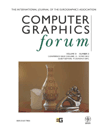
COMPUTER GRAPHICS FORUM
Driving Excellence in Computer Graphics ResearchCOMPUTER GRAPHICS FORUM, an esteemed journal published by Wiley, is a leading platform for disseminating cutting-edge research in the fields of computer graphics and computer-aided design. With a prestigious Q1 ranking in both Computer Graphics and Computer-Aided Design and Computer Networks and Communications (2023), this journal consistently showcases high-impact studies that influence the development of visualization techniques and graphic systems. Covering a wide array of topics from rendering algorithms to virtual and augmented reality applications, COMPUTER GRAPHICS FORUM is committed to fostering innovation and interdisciplinary collaboration within the global research community. Although it does not offer open access, the journal maintains a rigorous peer-review process, ensuring the highest standards of academic quality and integrity. With its rich history since 1982 and an ongoing commitment to advancing the state of knowledge in computer graphics, this journal is essential reading for researchers, industry professionals, and students looking to stay at the forefront of technological advancements.
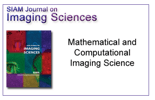
SIAM Journal on Imaging Sciences
Advancing the Frontiers of Imaging Science.SIAM Journal on Imaging Sciences is a prestigious academic journal published by SIAM PUBLICATIONS, focusing on the latest advancements and applications in imaging sciences within the fields of applied and general mathematics. Since its inception in 2008, the journal has established itself as a premier outlet for original research, evidenced by its remarkable standing in the academic community, including a Q1 ranking in both Applied Mathematics and Mathematics (miscellaneous) for 2023. With a Scopus rank of #45 in General Mathematics and an 88th percentile achievement, the journal continues to attract high-quality contributions, making it a vital resource for researchers, professionals, and students eager to stay at the forefront of imaging science developments. Although not currently open access, the journal provides significant visibility through its rigorous peer-review process and commitment to scholarly excellence, ensuring that published works contribute substantially to knowledge in the field. For those looking to delve into innovative imaging techniques or mathematical modeling approaches, the SIAM Journal on Imaging Sciences remains an essential reference point.
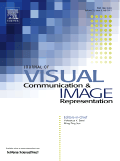
JOURNAL OF VISUAL COMMUNICATION AND IMAGE REPRESENTATION
Pioneering Research in Multimedia and CommunicationJOURNAL OF VISUAL COMMUNICATION AND IMAGE REPRESENTATION, published by Academic Press Inc Elsevier Science, is an influential platform dedicated to the realms of visual communication, media technology, and advanced image representation. With a strong focus on interdisciplinary approaches, this journal aims to foster the exchange of innovative ideas among researchers and professionals in the fields of computer vision, image processing, and signal processing. Recognized for its significance, it boasts an impressive impact factor within its category quartiles; notably, it ranks Q2 in Computer Vision and Pattern Recognition and Electrical and Electronic Engineering, while achieving Q1 in Media Technology. Based in the United States, the journal not only provides valuable insights into the latest developments from 1990 to 2024 but also encourages cutting-edge research that enhances multimedia systems and user interactions. As a vital resource for students, researchers, and industry professionals alike, the journal ensures a robust understanding of visual information processing, critical for navigating today's digital landscape.

JOURNAL OF MATHEMATICAL IMAGING AND VISION
Innovating Insights in Imaging and Pattern RecognitionJOURNAL OF MATHEMATICAL IMAGING AND VISION, published by Springer, stands as a significant platform for advancing the fields of applied mathematics, computer vision, and pattern recognition, among others. With an ISSN of 0924-9907 and an E-ISSN of 1573-7683, this esteemed journal is based in the Netherlands and has been contributing to the scholarly discourse since its inception in 1992, with a converged focus through 2024. It has achieved reputable standings within several quartiles, including Q2 rankings across applied mathematics, geometry and topology, and condensed matter physics, reflecting its impact and relevance. Notably, the journal ranks within the top 5% in Geometry and Topology and maintains robust standings in Statistics and Probability. The JOURNAL OF MATHEMATICAL IMAGING AND VISION is dedicated to publishing high-quality research that bridges theoretical perspectives with practical applications, making it an essential resource for researchers, professionals, and students who are exploring the cutting-edge of mathematical imaging and its interdisciplinary applications.
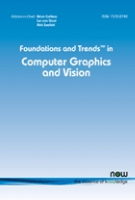
Foundations and Trends in Computer Graphics and Vision
Illuminating Trends in Graphics and Vision ResearchFoundations and Trends in Computer Graphics and Vision, published by NOW PUBLISHERS INC, is a premier journal dedicated to advancing the fields of computer graphics and vision. With an impressive impact factor and ranked Q1 in the Computer Vision and Pattern Recognition category, this journal has established itself as a vital resource for cutting-edge research and trends. Spanning from 2005 to 2024, it covers a wide array of topics within its scope, featuring comprehensive reviews and insights that are essential for professionals, researchers, and students alike. The journal’s high Scopus rank, placing it in the top 4 of 106 in its discipline, underscores its relevance and authority in the field. While currently not offering open access, the importance of its curated content makes it a valuable addition to any academic library and a must-read for those looking to stay at the forefront of computer graphics and vision advancements.

METRIKA
Exploring the Depths of Probability and Application.METRIKA is a distinguished journal published by Springer Heidelberg, specializing in the field of Statistics and Probability. Since its inception in 1958, this journal has been pivotal in advancing the study and application of statistical methods, theory, and research. With an impressive academic legacy extending to 2024, METRIKA holds a Q2 category ranking in both Statistics and Probability and Statistics, Probability and Uncertainty, as of 2023, which underscores its significance within the scholarly community. Researchers and professionals will find that METRIKA not only emphasizes the recent developments and applications in the field but also aims to foster an interdisciplinary dialogue among statisticians and data scientists. Its contributions are invaluable for those seeking to navigate the complexities of statistical methodologies. Although the journal primarily operates under a traditional access model, its commitment to excellence and relevance in statistical discourse ensures that it remains an essential resource for academics, practitioners, and students alike.

VISUAL COMPUTER
Elevating the Standards of Visual Computing ResearchVISUAL COMPUTER is a prestigious journal published by Springer, focusing on the dynamic fields of computer graphics, computer-aided design, computer vision, and software. Established in 1985, this interdisciplinary journal serves as a vital platform for sharing innovative research, applications, and developments crucial to the advancement of visual computing technologies. With a notable Q2 ranking in various categories, including Computer Graphics and Computer-Aided Design, and Computer Vision and Pattern Recognition, VISUAL COMPUTER demonstrates a solid impact within the academic community, marked by its Scopus rankings that reflect its significant contributions to the field. While the journal does not offer open access, it remains a reliable source of high-quality content for researchers, professionals, and students eager to stay abreast of emerging trends and techniques, ultimately fostering collaboration and knowledge exchange within the rapidly evolving landscape of visual computing.

Visual Computing for Industry Biomedicine and Art
Championing Open Access Research in Visual Computing ExcellenceVisual Computing for Industry Biomedicine and Art, published by SPRINGER SINGAPORE PTE LTD, is an esteemed Open Access journal that has made significant contributions to its fields since its inception in 2018. With an impressive scope that intersects Computer Graphics, Computer Science, Medicine, and the Visual Arts, this journal serves as a pivotal platform for disseminating research and advancements that address contemporary challenges and innovations in visual computing. Notably, it holds a commendable standing in various Scopus rankings, achieving Q2 status in critical categories such as Computer Vision and Pattern Recognition and Visual Arts, which underscores its impact and reach within the academic community. Its promulgation of high-quality research fosters synergy between diverse disciplines, making it an invaluable resource for researchers, professionals, and students eager to engage with cutting-edge developments in both technology and the arts. The journal's commitment to accessible knowledge, evident through its Open Access offering, further enhances its role as a beacon for scholarly discourse in visual computing.